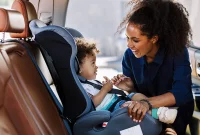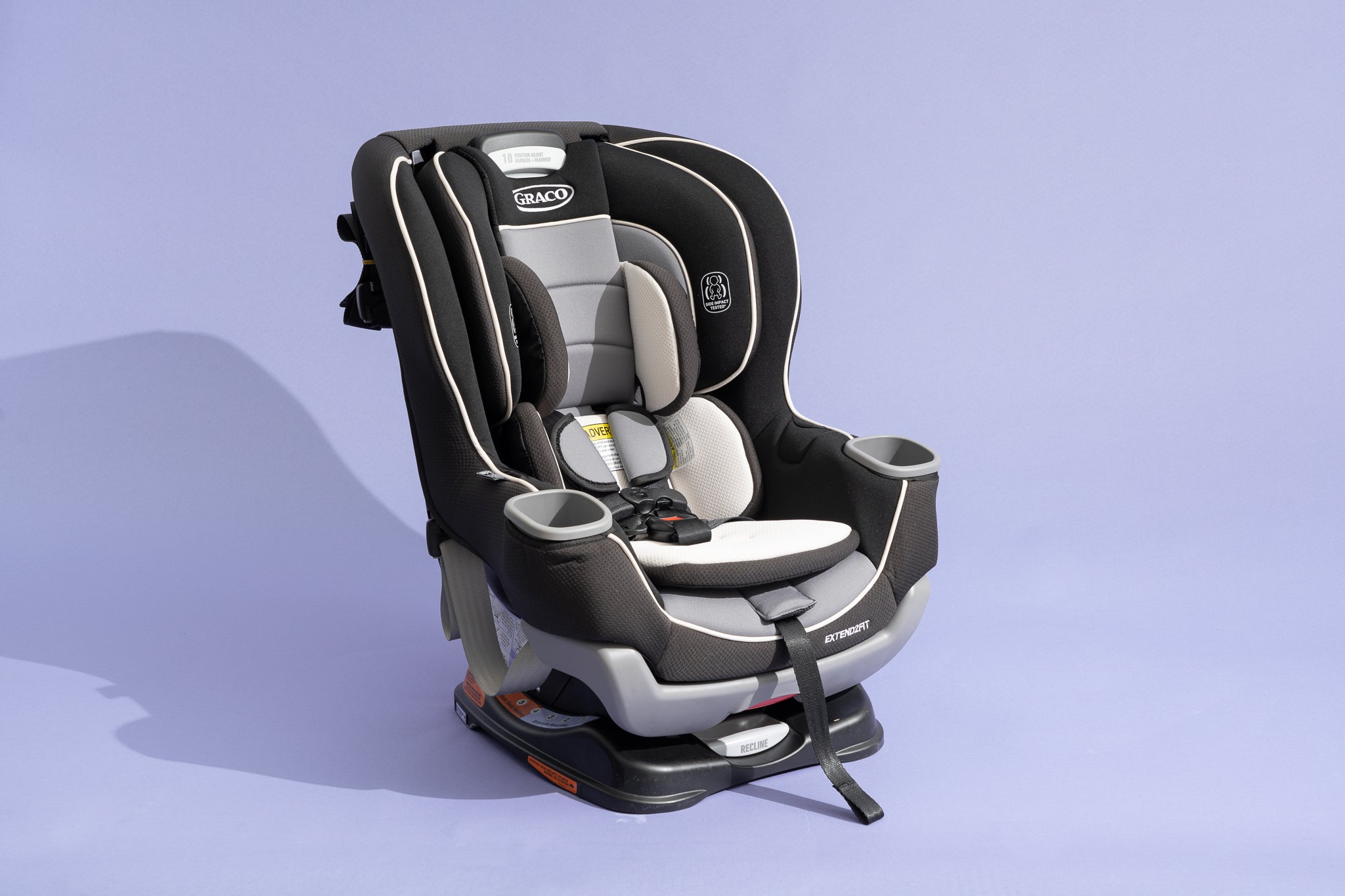The safety of your baby is paramount, especially when it comes to traveling in a vehicle. Car seats play a crucial role in providing protection and ensuring the well-being of infants and young children during journeys. Understanding the importance of car seats and knowing how to choose, install, and use them correctly is essential for every parent. In this comprehensive guide, we will explore the fundamentals of car seats, the different types available, and provide essential tips to guarantee your baby’s safety while on the road.
Why Are Car Seats Essential for Baby Safety?
1. Protection in Accidents:
These are specifically designed to provide a high level of protection for infants and young children in the event of a car accident. They are engineered to minimize the risk of injury by absorbing impact forces and securing the child in a safe position.
2. Compliance with Legal Requirements:
In many countries, the use of car seats is a legal requirement for infants and young children. Adhering to these regulations is not only a legal obligation but, more importantly, ensures the safety of your child while traveling by car.
3. Proper Positioning for Airbag Safety:
Placing a baby in a rear-facing car seat ensures that their delicate neck and spine are properly supported. This positioning is crucial, especially in vehicles equipped with front airbags, as it minimizes the risk of injury from airbag deployment.
4. Secure Restraint System:
It provide a secure restraint system that keeps the baby safely restrained during the journey. Whether it’s a harness for infants or a booster seat for older children, these devices ensure that the child remains in a secure position, minimizing the risk of injury due to sudden stops or accidents.
5. Peace of Mind for Parents:
Using a car seat offers peace of mind for parents, knowing that they have taken a critical step to protect their child during travels. The proper use of car seats is an essential component of responsible and safe parenting.
Types of Car Seats:
1. Rear-Facing Infant:
Designed for newborns and infants, rear-facing infant car seats provide optimal support for a baby’s developing head, neck, and spine. They typically have a carrying handle and a base that can remain in the vehicle for easy installation and removal of the seat.
2. Convertible:
Convertible car seats are versatile and can be used in both rear-facing and forward-facing modes. They accommodate a range of ages and sizes, making them suitable for extended use as the child grows. Convertible car seats are an excellent choice for parents seeking longevity and adaptability.
3. Forward-Facing:
Forward-facing car seats are suitable for older toddlers and young children who have outgrown the rear-facing position. These seats use a five-point harness to secure the child and provide protection in the event of a collision.
4. Booster Seats:
Booster seats are designed for older children who have outgrown the forward-facing car seat but are not yet tall enough for the vehicle’s seat belt to fit properly. Boosters lift the child, ensuring that the seat belt aligns correctly across the shoulder and hips for effective restraint.
5. All-in-One:
All-in-one car seats are designed to accommodate various stages of a child’s growth, from rear-facing to forward-facing and eventually transitioning to a booster seat. These seats offer convenience and versatility for parents who prefer a single seat for different developmental stages.
Choosing the Right Car Seat:
1. Consider Your Child’s Age and Size:
Ensure that the seat provides a secure fit and proper support for your child’s specific size and developmental stage.
2. Check for Safety Standards:
Select a car seat that complies with safety standards and regulations in your country or region. Look for certification labels and ensure that the seat has undergone rigorous testing for crash protection.
3. Evaluate Installation Ease:
Proper installation is critical for the effectiveness of a car seat. Choose a seat that comes with clear and straightforward installation instructions. Consider features such as latch systems or built-in level indicators that facilitate correct installation.
4. Determine Long-Term Usability:
Consider the long-term usability of the car seat. Some seats, such as convertible or all-in-one models, can accommodate a child from infancy to the booster seat stage. This ensures that you won’t need to purchase multiple seats as your child grows.
5. Look for Side-Impact Protection:
Choose a car seat that features side-impact protection, which provides additional support and safeguards the child in the event of a side collision.
6. Check Expiry Date:
Car seats have an expiration date, typically ranging from six to ten years. Check the manufacturer’s label for the expiry date and avoid using an expired car seat, as it may not provide the same level of safety and protection.
7. Consider Compatibility with Your Vehicle:
Check the compatibility of the car seat with your specific vehicle model. Some car manufacturers may have guidelines or recommendations for car seats that work well with their vehicles.
Installing and Using a Car Seat:
- Read the Manual:
- Always read the car seat manual thoroughly before installation and use. The manual provides specific instructions on how to install the seat correctly and use it in various modes.
- Install in the Back Seat:
- Install the car seat in the back seat, preferably in the middle, away from airbags, which can pose a risk to rear-facing car seats.
- Use the Right Harness Slots:
- Adjust the harness straps to the appropriate slots based on your child’s size. For rear-facing seats, the straps should be at or below the baby’s shoulders, while for forward-facing seats, the straps should be at or above the shoulders.
- Ensure a Snug Fit:
- Perform the pinch test by ensuring that you cannot pinch any excess webbing at the child’s shoulders. A snug fit is crucial for the effectiveness of the restraint system.
- Securely Attach the Top Tether:
- If using a forward-facing car seat, securely attach the top tether to the designated anchor point in your vehicle. The top tether enhances the stability of the car seat and reduces forward movement in the event of a collision.
- Check for Proper Angle:
- For rear-facing seats, ensure that the seat is reclined at the proper angle to support your baby’s head and neck. Most rear-facing seats have built-in angle indicators or adjustment mechanisms to achieve the correct recline.
- Regularly Check Straps and Buckles:
- Periodically check the harness straps and buckles for any signs of wear, damage, or twisting. Ensure that the straps are not twisted and that the buckles engage and release properly.
- Avoid Bulky Clothing:
- Dress your baby in thin layers when using the car seat. Avoid bulky clothing or accessories that can interfere with the proper fit of the harness straps.
- Replace After an Accident:
- If your vehicle is involved in an accident, replace the car seat, even if there is no visible damage. Car seats are designed to withstand a single impact, and their effectiveness may be compromised after a collision.
Tips for Safe Travel with a Car Seat:
- Plan for Breaks during Long Trips:
- Plan breaks during long trips to allow your baby to stretch and move around. Use these breaks to check the car seat’s installation and ensure that your baby remains comfortable.
- Use a Travel System:
- Consider using a travel system that includes a car seat that can attach to a stroller. This allows for easy transitions between the car and stroller without disturbing your sleeping baby.
- Shield from the Sun:
- Use a car window shade to shield your baby from direct sunlight during car rides. Direct sunlight can make the car seat uncomfortably hot and affect your baby’s well-being.
- Pack Essentials in the Car:
- Keep essentials such as diapers, wipes, snacks, and a change of clothes in the car. This ensures that you are well-prepared for unexpected situations during your travels.
- Stay Informed about Recalls:
- Stay informed about car seat recalls. Register your car seat with the manufacturer to receive notifications about recalls and ensure that your car seat meets the latest safety standards.
- Educate Caregivers:
- If others will be transporting your baby, educate them on the correct installation and use of the car seat. Ensure that caregivers are aware of safety guidelines and adhere to proper practices.
- Use Rear-Facing Seats Longer:
- Whenever possible, use rear-facing seats for as long as your child meets the weight and height requirements. Rear-facing provides the best protection for a baby’s head, neck, and spine.
- Secure Loose Items in the Car:
- In the event of sudden stops or turns, loose items in the car can become projectiles. Secure any loose items to ensure the safety of all passengers, including your baby furniture.
Conclusion:
Car seats are indispensable for ensuring the safety and well-being of infants and young children during travels. Choosing the right type of car seat, installing it correctly, and using it in accordance with safety guidelines are critical responsibilities for parents. By prioritizing safety standards, adhering to legal requirements, and staying informed about proper usage, parents can provide their babies with the highest level of protection while on the road. Car seats not only fulfill a legal obligation but, more importantly, serve as a fundamental aspect of responsible and caring parenting.





